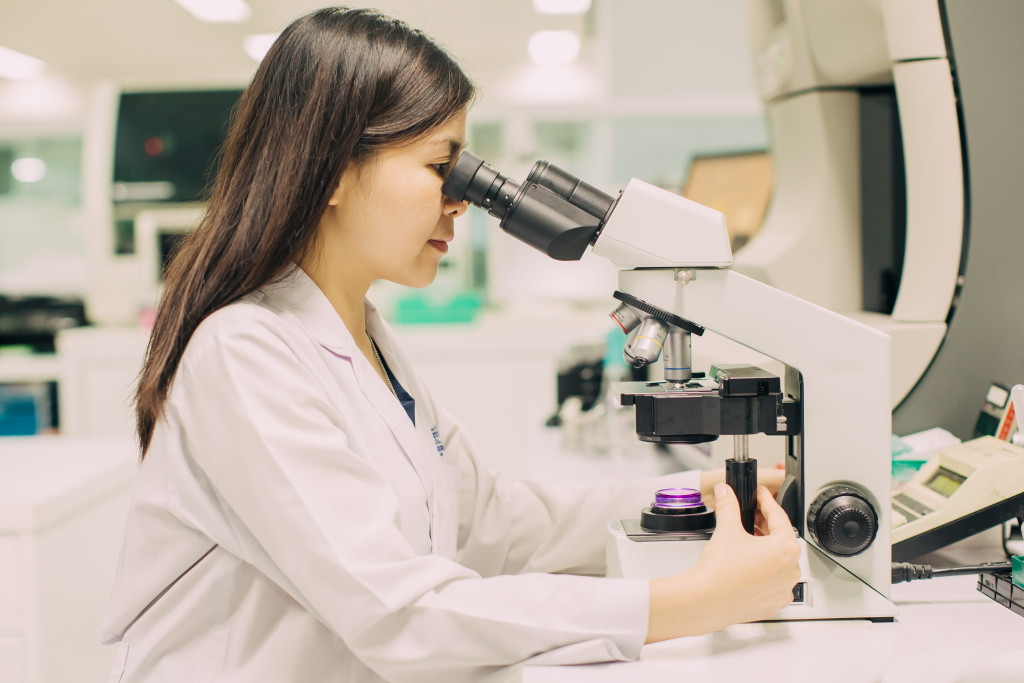Medical research facilities are essential for people’s health and wellbeing. The workers will research to develop new treatments and cures for diseases and improve the quality of life for people with chronic conditions. To do that, they will be working with a lot of chemicals.
Chemicals and liquid substances are essential in the medical research lab to carry out experiments and tests accurately and effectively. It is vital to have a sterile environment in the lab to prevent infection. Those substances are the most valuable assets in the facility. Without them, the lab would be unable to function correctly.
However, medical research facilities can also be dangerous places. Chemicals and other substances used in research can be toxic, flammable, or explosive. It is vital to protect workers and the public from these hazards. Here are a few ways to approach protecting chemicals and liquid substances inside the facility.
Proper Temperature Storage
Most chemicals need to get stored at a specific temperature to avoid wastage or potential issues. For example, if a chemical is at too high a temperature, it could start to break down and become less effective. If it is too low a temperature, it could freeze and become unusable. These situations are why medical labs need to have freezers and fridges to store their chemicals at the correct temperature.
Medical research labs also need to have a way to store flammable liquids. Medical labs must keep these substances away from potential ignition sources, such as heaters or naked flames. The best way to do this is to have a dedicated storage area for these materials, usually called a flammable store.
It will be necessary to keep those storage solutions functional, even in a blackout. As a result, medical labs often have a power protection supply if the electricity goes out.
Chemical Storage Solutions
All medical research labs will have many different chemicals stored on site. Some of these may be in use every day, while others may only get used occasionally. All chemicals must be appropriately labeled and stored correctly.
There are several ways to store chemicals safely:
- In cabinets: All chemicals should be stored in cabinets explicitly designed for this purpose. The cabinet should be made of fire-resistant materials and have self-closing doors.
- On shelves: The shelves should be out of fire-resistant materials, such as metal. They should be strong enough to hold the weight of the chemicals.
- In cupboards: The cupboards should be made of fire-resistant materials, such as metal. They should have self-closing doors.
It is also essential to have a system in place to make all of the chemicals easy to find when needed. This system could include a color-coding system or labels with the name and purpose of the chemical.
The Handling of Chemicals
All medical research labs will have procedures in place to safely handle chemicals. Medical should follow these procedures to minimize the risk of accidents.
Medical researchers should pour all chemicals into containers with spill-proof lids. These lids will help prevent accidental spills and protect workers from coming into contact with the chemicals.
When transporting chemicals around the facility, using a trolley or similar device is essential. It would help to prevent injuries if the containers were to fall over.
Safety Data Sheets
Every chemical in the medical research lab should have a Safety Data Sheet (SDS). The SDS will contain information about the chemical hazards and how to work with them safely.
The SDS should be easily accessible to all workers in the facility. They should also be regularly reviewed and updated as new information becomes available.
It is essential to have a plan in place for what to do in a chemical spill. The SDS will contain information about how to clean up the spill safely.
All medical research labs should have an emergency shower and eyewash station. These stations will allow workers to quickly wash away any chemicals that contact their skin or eyes.
Personal Protective Equipment

All workers in the medical research lab should wear Personal Protective Equipment (PPE) when handling chemicals. PPE will protect them from coming into contact with hazardous substances.
The type of PPE needed will depend on the chemicals used, and the task carried out. It is essential to ensure that the PPE is fit for purpose and that workers know how to use it correctly.
It is essential to have good ventilation in the area when using chemicals. This step will help to prevent workers from breathing in hazardous fumes.
It is also essential to know what to do if a worker does come into contact with a chemical. They should immediately wash the area with soap and water and seek medical attention if necessary.
Conclusion
Working with chemicals can be dangerous, so taking all necessary safety precautions is essential. All medical research labs should have dedicated storage areas for chemicals, and these should be appropriately labeled.
Medical research companies should train all workers in the facility to handle and use chemicals safely. They should also be aware of the hazards associated with each chemical and how to protect themselves.





